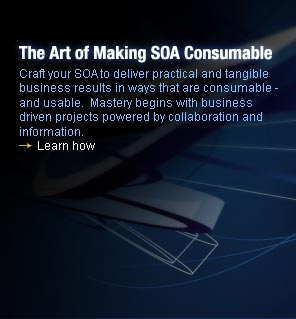SOA was a moment in time, a moment defined and described as “SOA” or service oriented architecture. That moment was and is analogous to that moment in time when Electricity” was defined and described. Its original use may have been lighting, however, it was some years before electricity became practical; the inventive element was momentary, the innovation was impending. With this said, the principle question, then pertains to the distinction between innovation vs. invention. Is SOA then, innovative or inventive? Innovation would imply the convergence of available knowledge into a “new” configuration; while inventive derives its power from its application, how it is applied.
As the industrial revolution was less about invention and more about innovation, it was left with the ignominious task of determining how best to leverage the available “capability” for the good of the many. In this respect, SOA is less about a revolution, and more about the activity that sets that stage for revolutions or any other stage of change, that of plowing the fertile soil of invention. I propose that we settle on the point that the SOA “announcement” by IBM and others, over the last few years, has been naught but the identification and description of a point in time, an inflection when need (of many) converged with the ability to deliver (respond) to that need by few. While we can now advance invention with out further identification, we most certainly can not evolve invention without some means to apply it. And, to the extent that these “applications” serve the greater good (the larger audience); it becomes difficult to ensure that both the more complex applications, and the greater the effort required to continue to prevent their regression to a more comfortable, more deterministic way of doing things, does not occur. This is precisely why it took a good number of years to replace gas lights on city streets, with electric lights. We had the capability, but not the will. As some might recall Max Plank’s famous statement, “gravity is a bitch”.
We see this with the users of invention, the customers, and their dependence on the innovators to best suggest ways to apply the invention. Say, for a moment, you were just to have discovered cold fusion. What would be the first thing you would do with it? Right! And there in lies the crux of the dilemma. SOA, first needs to go through a process of socialization. Just as we had to do with electricity, and later, nuclear power. Socialization comes in two flavors, the first consists of familiarization; obtaining a comfort level with the invention. You can see this when you watch children discover new things, like, say, putting their hands on a hot surface. They have, in that instant, discovered “heat”. The second consists of application: electricity did not become practical-social until an industry of manufacturing grew up around it, an industry predicted not just on use it to operate, but on creating other things that used it to operate; toasters, coffee grinders, automatic bowling machines.
The process of invention socialization can be arduous as it brings with it some difficult questions. The first of these is, whom it shall benefit. Let’s look at a bank, an institution both physical and virtual, providing services to many thousands of people, distributed around the planet. If you were ask that “bank” who or what it was in business for, it would/should tell you it was for the customer, the banking service consumer. And if you were to ask them why that customer used their bank, they should tell you it was because the customer got better/more “service” from your bank. To ensure that you always stay ahead of that curve, giving something more to the customer, you have to continually invent (or is it innovate) new “services” to provide to the customer to keep them attending/committed to you. But when you peel back the layers of what it means to create continual innovation/inventiveness in this bank, you find that you have a quagmire of history that starts to get in your way. Now some of this history is physical, machine and software that is too slow, cumbersome, unconnected, limited, etc.; whiles some of the history is in the people, or their sum, the institution. If you are to apply invention to this environment you have to anticipate how all the historical elements will behave. And in this sense, you begin to understand why the value of the definition of SOA is in adaptive and inventive nature. SOA, applies its value to bridging the chasm between the historical elements, it “integrates”, philosophically, the two domains, the people and the systems. But once you have established the definition of the invention, what next occurs is the real magic, that is, the means and methods to apply it in real life. That is, to first socialize it amongst the constitute users, and in parallel, to establish a manufacturing capability to innovate this invention, to “APPLY” it.

